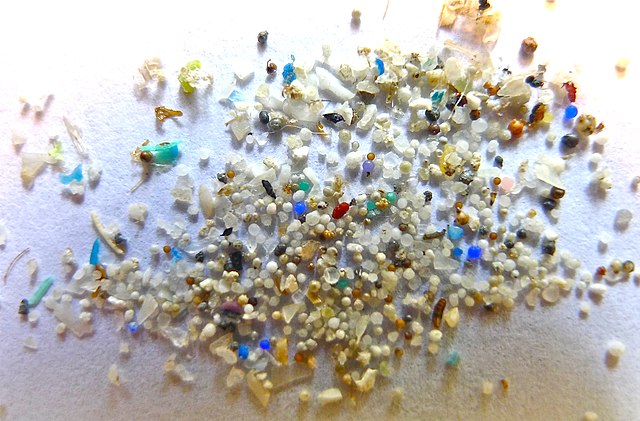This site may earn affiliate commissions from the links on this page. Terms of use.
(Photo: Oregon State University)Humankind has spent a lot of time worrying about microplastics and virus transmission as of late, and for good reason. Now the two concerns have converged to create a problem only this decade could devise: microplastic-riding viruses.
A new study out of the United Kingdom has found that viruses are capable of catching a ride on microplastics in bodies of freshwater. These hitchhiking viruses are thus able to extend their longevity, surviving in water for up to three days longer than they otherwise would.
The study, which was funded by the Natural Environment Research Council, aimed to determine how plastic pollution can act as a vehicle for disease. Biologists, virologists, and environmental scientists at Stirling University tested how various types of viruses attached themselves to synthetic materials in freshwater systems, most notably sewage systems. While viruses and bacteria have long been understood to attach themselves to other substances in their environment, organic materials don’t “survive” nearly as long as their synthetic counterparts. With plastic pollution increasing worldwide, scientists’ understanding of the relationship between plastic and disease is all the more vital.

Microplastics aren’t always captured by water treatment plants like the one pictured, meaning viruses have an escape route to the general water supply. (Photo: Ivan Bandura/Unsplash)
The researchers found that the presence of a surrounding “lipid envelope” determined the virus’ ability to bond with and survive on microplastics. Viruses without a lipid envelope, like rotavirus, hepatitis A, and norovirus, quickly attached with microplastics and survived up to three days longer than usual. Viruses without a lipid envelope, like influenza, were thankfully incapable of such success. The viruses’ fatty coatings dissolved in freshwater, leaving the disease itself to die.
Rotavirus, hepatitis A, and norovirus are often found in raw sewage. (So are respiratory viruses like influenza, though these viruses’ fatty envelopes preclude a constructive relationship with microplastics.) These viruses are also less susceptible to “deactivation” techniques, like UV irradiation, chlorine or ozone, which are typically used to mitigate viral pathogens. Even after undergoing wastewater treatment, microplastics—which are sometimes too small to be seen by the naked eye—often make it out to rivers or beaches, where human contact can occur.
The combination of microplastics and hitchhiking viruses creates an unfortunate new public health risk. As communities recognize the pervasiveness of microplastic pollution, they’ll be required to tackle not only the presence of tiny plastics themselves but also the diseases that link up with them. As of this writing, the researchers involved in this study are planning another project that will further test the longevity of plastic-riding viruses in the water supply.
Now Read:
Source by www.extremetech.com






























